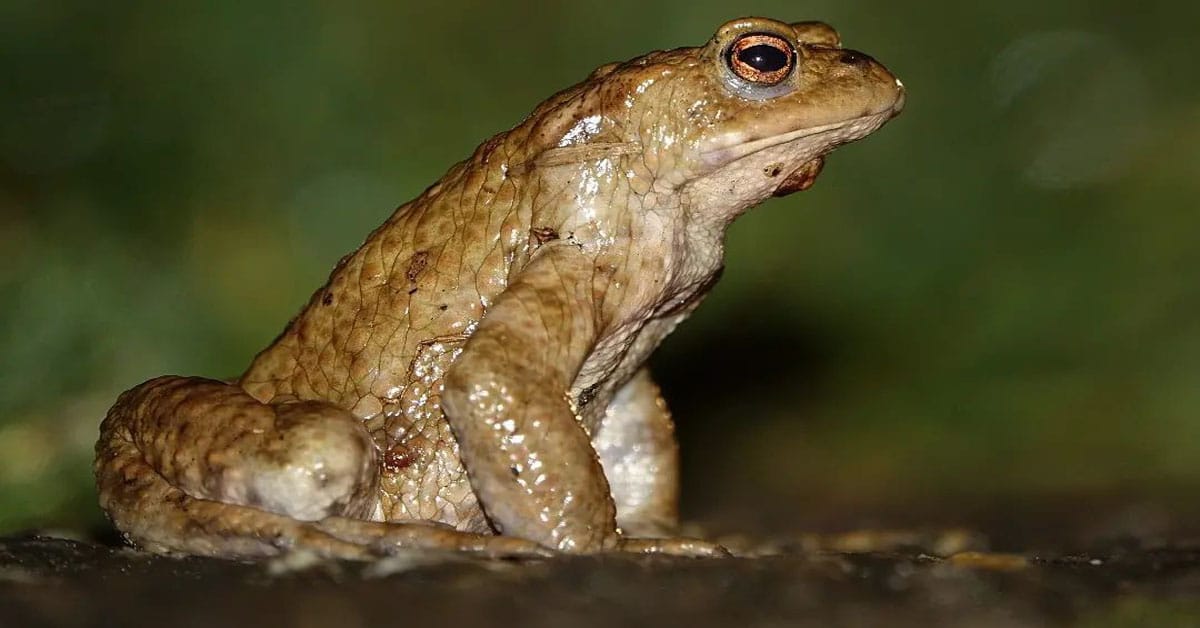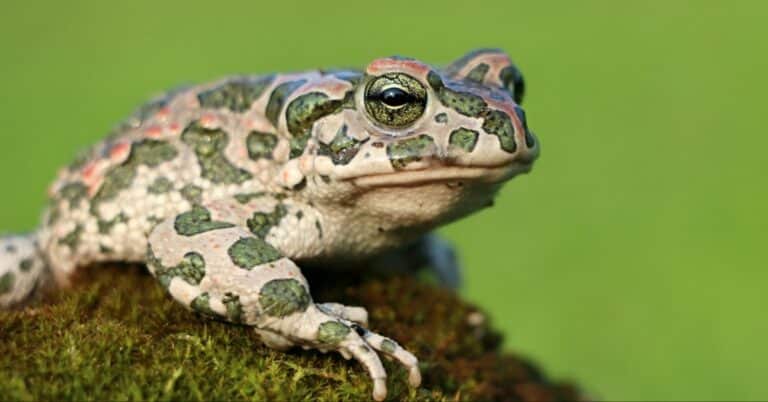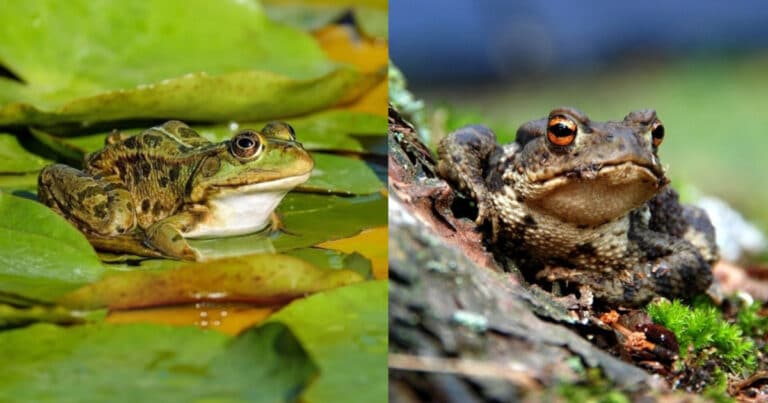Toad Life Cycle – Development Stages of Weird-Looking Frog
If you are a landscaper, you must be delighted to see a toad come over. Toads are beneficial in gardens because they chase insects, slugs, and snails. A local toad reduces the number of pests and removes the need for harsh poisons.
If you would like to discover more about this wrinkly amphibian and its lifespan, then this toad life cycle overview will definitely give you all the essential information.
What Are Toads?
Some frogs, especially those that belong to the Bufonidae family, are known as toads. They have small legs, leathery skin, and enormous masses that conceal their parotoid glands. The bumps are typically thought of as tumors, but they are not contagious. That is, touching a toad will not result in tumors.
Toads come in about 350 different varieties. They appear in a range of sizes as well. The tiniest toads in North America are the oak toads, which are only about 1.3 inches long. The largest toads are cane toads, which can grow up to 9 inches long.
Toads produce venom in the parotid glands behind their eyes as one of their many defenses against attackers. It is only harmful once it gets ingested or touches the eyes.
The United States is home to a wide variety of toad types. Except for Antarctica, toads can be found on all continents. In general, adult toads favor open, moist environments like meadows and grasses. The American toad (Anaxyrus americanus) is a ubiquitous garden animal that inhabits backyards in the Northeast and consumes dangerous insects.
Toads are amphibians very similar to frogs. They vary from most frogs in that they have parotid glands, dry skin, tumors, and crests behind the eyes. To protect the toad from attackers, the parotid glands secrete a toxic substance. This substance, known as bufotoxin, can kill tiny creatures and trigger allergic responses in people. Toads can evade predators in other ways as well.
They can hide from plain eyesight if they are brown or green in hue because they can blend in with their environments. They caution predators to keep away if they are colorfully painted because they are poisonous. Additionally, toads inflate their bodies to make themselves appear larger and inedible to potential predators.
Toad Life Cycle
Those interesting amphibians go through four phases in toad life cycles. Tadpoles are produced by the embryos that adult toads deposit. The tadpoles grow into froglets, then mature toads that continue to procreate. Depending on the breed, a toad life cycle can have a different length. For instance, the typical cane toad in the southern United States has a lifespan of five to ten years.
Egg Stage
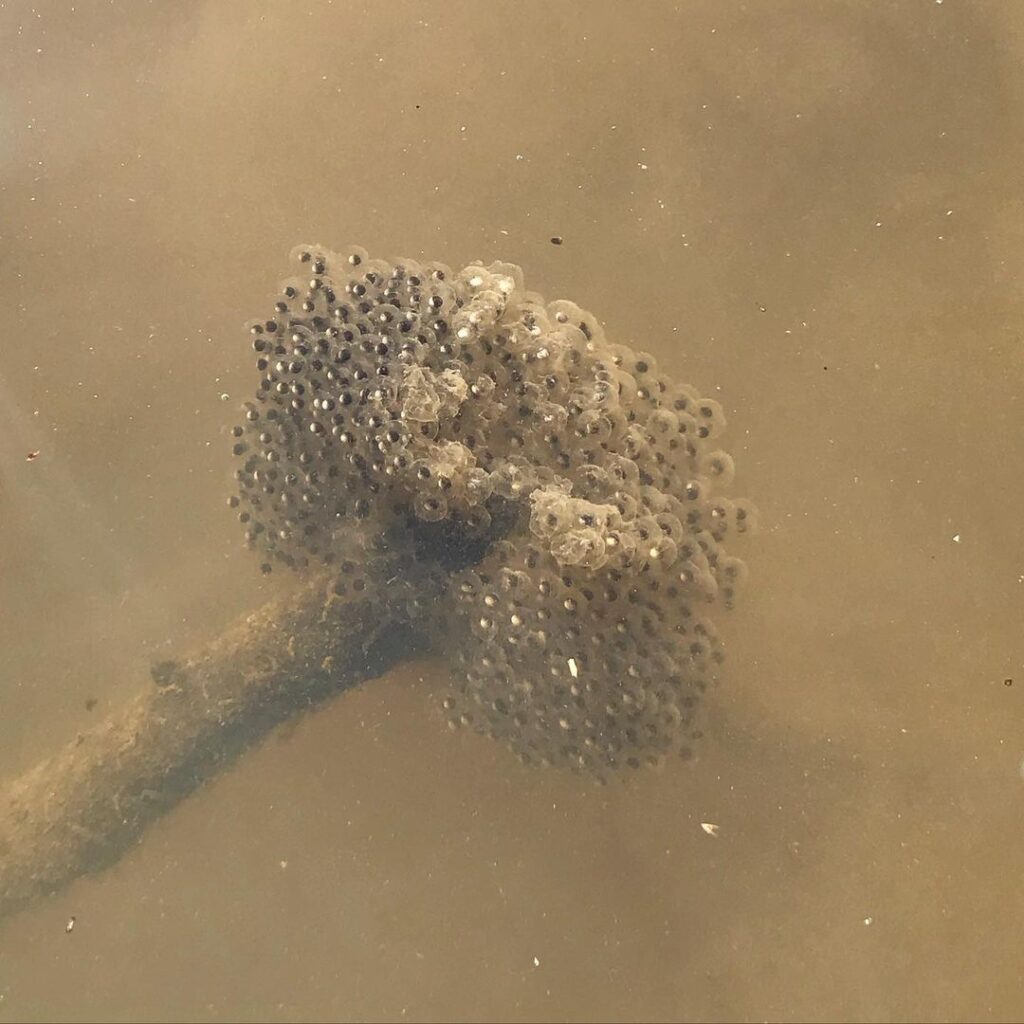
The embryo stage is the first step in the toad life cycle. Adult females deposit their eggs in the ocean during the springtime months. Unlike frogs, who typically deposit their eggs in a mass or cluster, the eggs emerge in a long chain. The progeny are collections of embryos. Compared to frog eggs, toad eggs typically hatch from sperm that is wrapped around aquatic vegetation.
Female toads deposit their eggs in the water. Depending on the water’s temperature, hatching happens 3–12 days after spawning. They produce 2 sets of 4000–8000 eggs. When extended, each array of eggs typically measures between 20 and 66 feet. The diameter of each solitary egg is 1.5 millimeters. The eggs develop the fastest at higher temperatures.
The tadpoles’ gills are situated just behind their lips on the sides of their skulls when they first emerge as adults. Tadpoles begin to develop their hind appendages during the first 20 days. The legs continue to gently but steadily develop. The front legs, which were previously hidden by a covering of the epidermis, start to show after 30 to 40 days.
Tadpoles
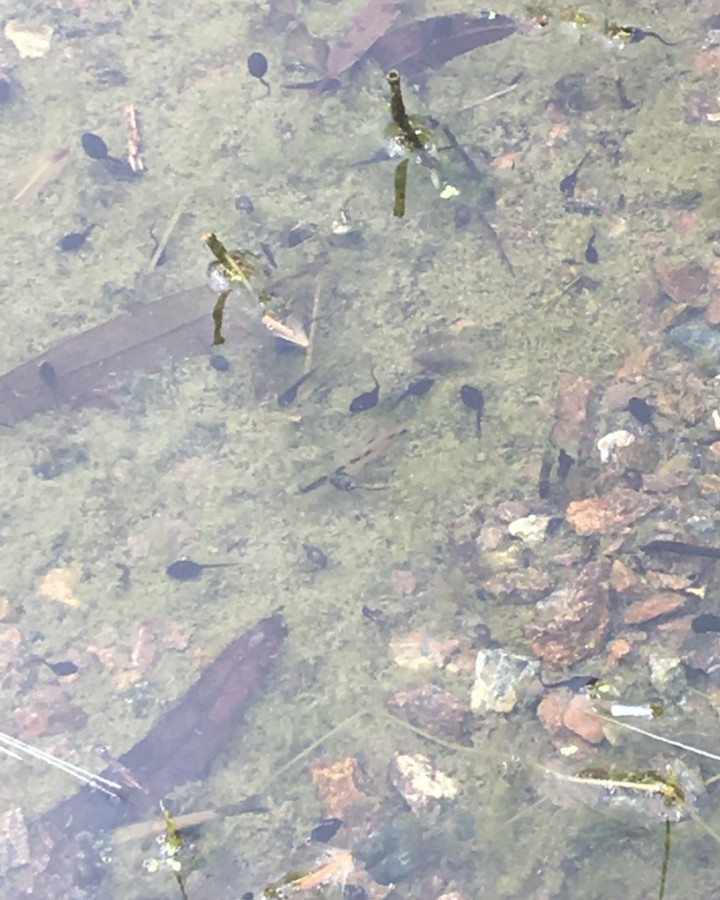
Within one to three weeks of the toad life cycle, tadpoles emerge from the egg. The tadpoles are dark in appearance. With gills and a mouth to breathe and consume, they have now sufficiently developed to live in water. They can only live in water as tadpoles. Tadpoles may initially consume the remaining egg yolk, but once this is gone, they begin to eat vegetation in shallow water.
There are frequently many tadpoles in the pond because the female lays hundreds of eggs. Because newts, dragonflies, and fish are among the most dangerous predators for tadpoles, females will deposit a lot of eggs to guarantee that a lot of them live.
Not every toad or frog goes through the tadpole period. But for reproduction, all frogs need a clean water supply. Although most toad species only survive 5 to 10 years on average, the common toad can live up to 40 years.
The tadpoles’ gills are situated just behind their lips on the sides of their skulls when they first emerge as adults. Tadpoles begin to develop their hind appendages during the first 20 days. The legs continue to gently but steadily develop. The front legs, which were previously hidden by a covering of the epidermis, start to show after 30 to 40 days.
The tadpoles’ gills disappear at the same moment as the front legs show, and they begin to breathe “atmospheric” air. They finish their metamorphosis between the final two or three days of growth, losing their tails and fortifying their legs. Additionally, they cease consuming vegetation in favor of animal products.
Newly transformed toads spend a few days near their wetland before dispersing and starting to exist mostly on land. Toads develop further until they achieve their adult height, which is roughly 75 mm.
Adulthood
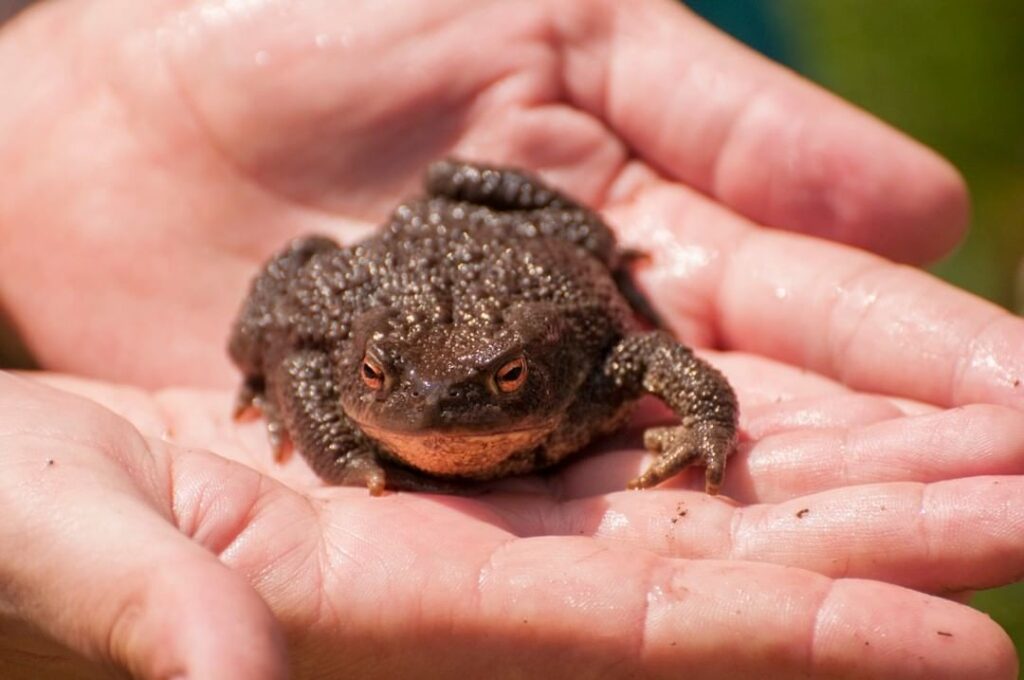
Adulthood is the last stage of the toad life cycle. As they age, toads develop legs to move around on the ground and lungs to breathe oxygen. They ultimately start to lose their tail. It reaches maturity, the last step of the toad life cycle when its tail is absorbed. Mature toads are more likely to spend the majority of their time on the ground and less time in the water.
The tail gradually vanishes over time as it gets smaller and smaller. The tadpole develops appendages and sheds its gills at the same moment. The adult toad is prepared to survive on land once this period of metamorphosis is over.
Those amphibians reach the adulthood stage of the toad life cycle when they are 2 to 3 years old.
How Do Toads Reproduce?
The toad life cycle is greatly dependent on its reproduction habits. Every toad variety has a distinctive sound. Males make calls to entice females for breeding or to keep other males out of their area. Most toad embryos, after fertilization, move to the tadpole stage of the toad life cycle, instead of becoming fully developed adults. Tadpoles lack legs and have lungs for breathing underwater in addition to tails for moving.
Depending on the location, the American toad reproduces from March to July. Males go to shallow mating waters and make a unique, high-pitched melodic trill that can last up to 30 seconds to entice females. The male captures the female as soon as she enters the mating pond and holds her there until she releases her eggs. The male then releases fluid-containing sperm onto the ova to fertilize them.
Long spiral tubes of a jelly-like material surround the embryos. They are deposited in two distinct lines, each containing thousands of eggs. In shallow water, the embryos are positioned on submerged plants. In the wild, American toads typically only live one or two years. The majority of tadpoles don’t even make it to adulthood.
What is Toad’s Preferred Habitat?
For their early growth, toads need a semi-permanent freshwater pond or lake. Additionally, they need dense foliage for protection and hunting areas. Toads can survive almost anywhere, from backyards to forests, as long as they have access to these two items and an abundance of insects to eat.
The outer conditions and weather have a huge influence on the toad life cycle. They are typical in farming areas and gardens. They seek shelter during the daytime under porches, boardwalks, flat stones, boards, logs, wood heaps, and other structures. When the weather turns cold, these toads migrate to another location to hibernate or burrow backward into their summer homes.
What Do Toads Eat?
Toads are carnivores as adults, but because tadpoles feed on water plants (algae), they are classified as herbivores.
Toads in the adulthood stage of the toad life cycle are omnivores. They consume a broad range of animals, such as snails, beetles, slugs, and earthworms, in addition to insects. American toads, for example, have sticky tongues that they can send out to capture food, unlike most toads that wait for their prey to come along and attack it.
In order to consume more sustenance, they may also use their front legs. They take their meal and place it on their lips. Up to 1,000 invertebrates can be consumed daily by a single toad.
Bottom Line
In this article, we explored and discussed the toad life cycle. Toads are frogs that spend the majority of the year feeding in forests, lawns, hedgerows, and tussocky grassland. They reproduce in ponds in the spring. Over the winter, they hibernate, frequently beneath mounds of logs, stones, or even abandoned flower containers. Toads go through a three-stage metamorphosis: the egg stage, the tadpole stage, and adulthood.

Nato is a content writer and researcher with a background in psychology who’s eager to explore the wonders of nature. As a travel enthusiast and animal lover, she hopes to inspire others to discover and cherish the beauty and importance of the natural world.

